Introduction
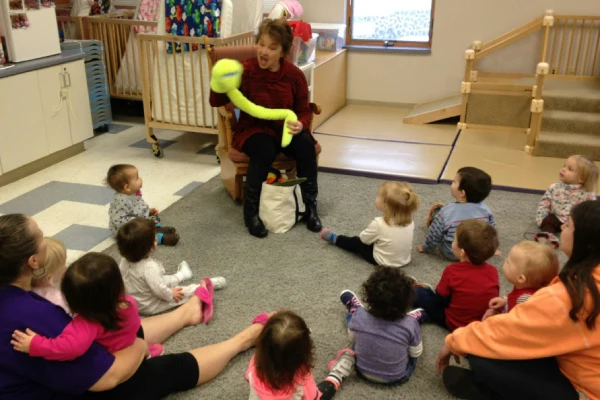
In nurseries, daycares, and preschools, children spend most of their day playing, learning, and napping indoors. A detail as small as infant socks can have a significant impact on both the children’s well-being and the institution’s reputation. For parents, the right socks mean safety, comfort, and hygiene. For childcare providers, standardized and well-chosen socks reduce risks, keep environments clean, and strengthen parental trust.
This article explores why baby socks are essential in daycare settings, what types are most useful, and how manufacturers and wholesalers can tap into the growing B2B opportunity across Europe and the U.S.
Why Baby Socks Are Essential in Daycare and Preschools
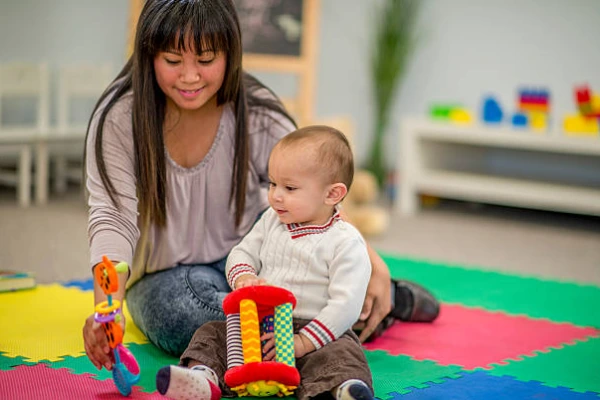
Safety: Non-Slip Socks Reduce Accidents
Slips and falls are among the most common daycare injuries. Non-slip infant socks with silicone grips or rubber soles give children stability on smooth floors and climbing equipment. For childcare centers, adopting anti-slip socks shows a clear commitment to safety, which reassures parents and lowers liability risk.
Comfort: Seasonal Socks for Year-Round Needs
Children’s feet are highly sensitive. In winter, thermal toddler socks in wool or fleece keep them warm on cold classroom floors. In summer, breathable cotton or bamboo socks prevent overheating. Seamless or cushioned options ensure all-day comfort during long daycare hours.
Hygiene: Supporting Clean Environments
Daycares that require indoor socks maintain higher hygiene standards. This practice reduces the dirt and germs tracked in by outdoor shoes and lowers the risk of cross-contamination in play spaces. Uniform sock policies create a healthier environment that also reduces cleaning workload for staff.
Trust: Enhancing Parent Confidence
Parents evaluate trust through small details. When a daycare ensures every child wears safe, clean, and comfortable socks, it signals professionalism and care. For institutions, this detail boosts their reputation, supports enrollment growth, and fosters long-term loyalty from families.
Everyday Sock Needs in Childcare Settings
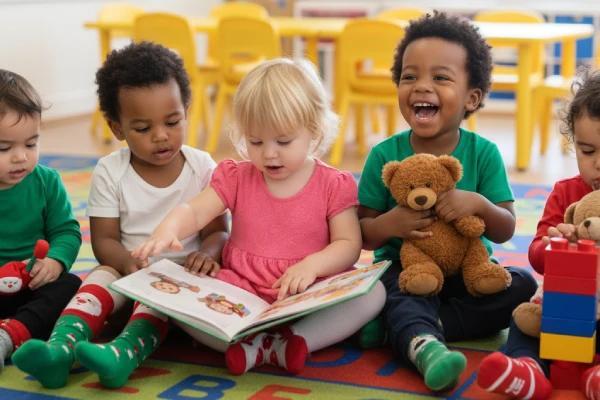
- Non-slip daycare socks for active play:
These are the most essential types for nurseries and preschools. Grippy infant socks with silicone dots or rubber soles help prevent falls on wood, tile, or vinyl floors, giving toddlers the stability they need when crawling, walking, or climbing. - Summer baby socks – breathable and lightweight:
In hot classrooms, cotton or bamboo socks keep feet cool and wick away sweat. These seasonal infant socks reduce discomfort and odor, making them ideal for all-day wear in U.S. and European childcare centers during summer. - Winter toddler socks – warm and protective:
Wool, fleece-lined, or thick thermal socks are critical in colder months, keeping children comfortable on cold floors and during outdoor transitions. Many daycare winter socks extend above the ankle for extra warmth and protection. - All-day comfort socks – organic and seamless:
For sensitive skin, seamless designs and organic cotton baby socks reduce irritation and help children stay comfortable through long hours of play, meals, and naps. They are especially valued by parents looking for hypoallergenic daycare options. - Holiday and event baby socks – adding fun and value:
Festive designs for Christmas, Halloween, or Thanksgiving bring excitement into classrooms and support daycare events. For suppliers, holiday infant socks and seasonal toddler socks create additional wholesale opportunities, making them a profitable add-on for childcare centers.
The Procurement and Management Perspective
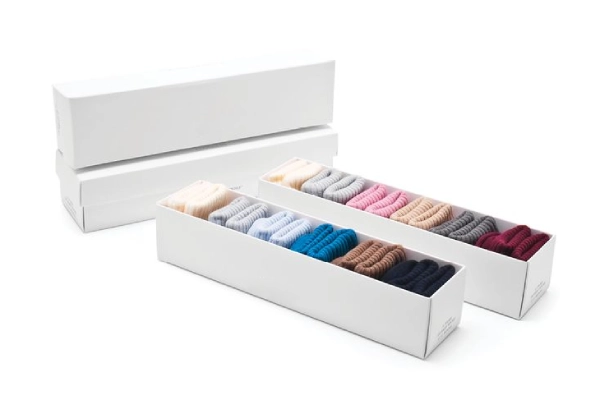
Challenges in Daycare Sock Management
- High turnover and losses: Socks are frequently misplaced or mixed up among children, creating extra cost and management hassle.
- Inconsistent quality: Different brands vary in durability and comfort, leading to uneven experiences for children and complaints from parents.
- Complex sizing needs: Children from infants to preschoolers require multiple size ranges, complicating inventory and distribution.
Practical Solutions for Institutions
- Bulk procurement with standardized sizing: Simplifies ordering by age group and reduces administrative overhead.
- Multipack and value bundles: Lower per-unit costs and ensure backup pairs are always available for children.
- Clear identification systems: Color coding, labeling, or age-specific packaging makes classroom-level management easier.
Supplier Value for Daycares and Preschools
- Custom-branded socks: Adding a daycare or preschool logo transforms socks into part of the institution’s identity and builds trust with parents.
- Eco-certified materials: Especially important in Europe, where sustainability standards like GOTS and OEKO-TEX influence purchase decisions.
- Affordable, durable options: In the U.S. market, preschools prioritize cost efficiency and resilience to frequent washing cycles.
Market Opportunities for Baby Sock Manufacturers and Wholesalers
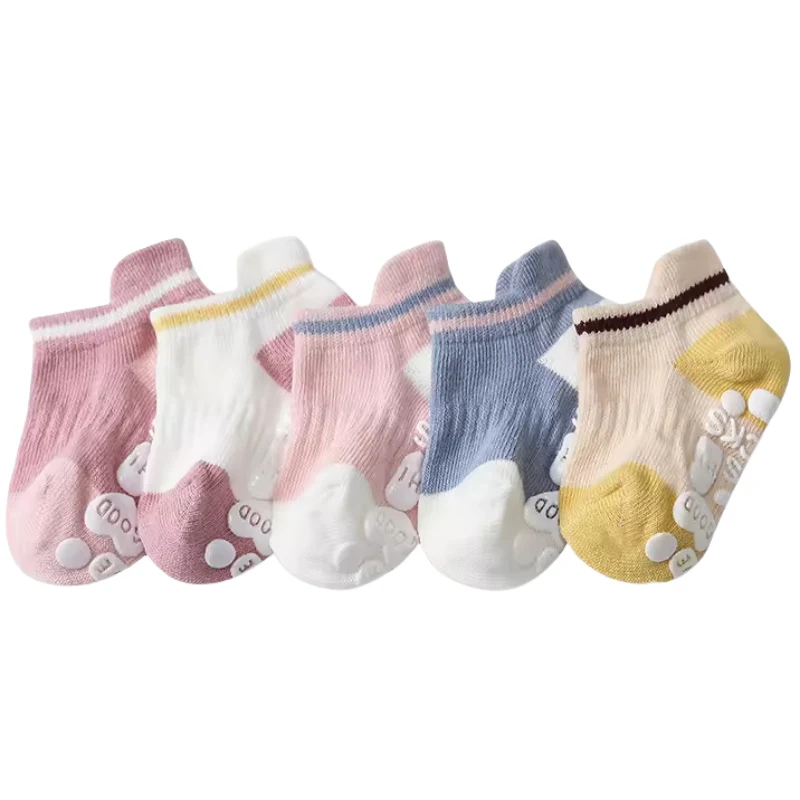
Europe: Parents and childcare institutions are increasingly focused on eco-friendly certifications such as GOTS or OEKO-TEX. Demand for organic cotton baby socks and sustainable toddler socks suppliers in Europe is rising, as nurseries prefer products that align with environmental and safety standards. For wholesalers, this creates opportunities to position eco-certified socks as a premium yet trusted option.
U.S.: American preschools and daycare chains are generally price-sensitive. They prefer wholesale infant socks in multipacks, with convenient sizing and durable fabrics that withstand frequent washing. Affordable, easy-to-manage solutions dominate the U.S. market, where institutions often purchase socks in bulk to simplify daily operations.
Innovation Opportunities: The next wave of growth lies in functional design improvements.
- Anti-slip technologies with full-sole grip coverage improve child safety in daycares.
- Stay-on cuff designs reduce lost socks, solving a common pain point for both parents and institutions.
- Seamless or cushioned socks appeal to nurseries managing children with sensitive skin or allergies.
For suppliers, these innovations represent not just product upgrades, but new selling points to differentiate in competitive wholesale markets. Manufacturers that combine safety, comfort, and sustainability will gain a clear advantage in both Europe and the U.S.
Future Outlook: Socks as a Value-Added Service in Childcare
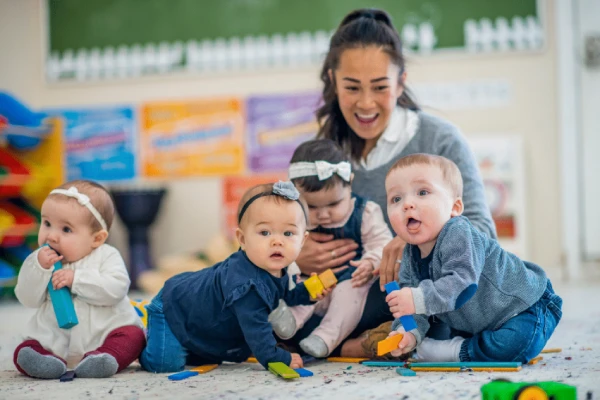
Looking ahead, daycare-ready socks are more than just a necessity — they represent a value-added service for childcare providers and a business opportunity for suppliers. Custom-branded infant socks can act as part of a daycare’s uniform, reinforcing identity, professionalism, and parent trust. Beyond branding, new business models are emerging: subscription-based sock bundles and seasonal replacement programs simplify management for nurseries and preschools while creating stable, recurring demand for wholesalers.
Differentiation also plays a key role. Limited-edition and holiday-themed baby socks — from Christmas to Halloween — enhance the childcare experience, delight families, and open up seasonal revenue streams. At the same time, eco-friendly and safety-certified infant socks are set to become industry standards across both Europe and the U.S. Regulations like EU REACH, OEKO-TEX, and U.S. CPSC guidelines are driving demand for sustainable, certified designs. For manufacturers and distributors, investing early in innovative features — such as stay-on cuffs, non-slip soles, and seamless comfort — ensures a long-term competitive edge in the evolving daycare sock market.
FAQs
Q1: How to label baby socks for daycare?
Use fabric-safe permanent markers or iron‐on name labels inside the cuff so they endure washes. Sewn‐in woven tags with initials or color–coding help caregivers sort pairs quickly. Make sure labels are soft and do not irritate the baby’s skin.
Q2: How many pairs of baby socks do I need for daycare?
Aim for 8–12 pairs so you always have clean ones during laundry cycles; increase to 12–15 or more in cold weather or for more active toddlers. Include extras for accidents and growth spurts. Quality and proper fit are more important than sheer quantity.
Q3: When should a baby start wearing socks?
Babies can wear socks from birth in cooler indoor or outdoor settings to help maintain warmth. Barefoot time is beneficial for sensory development when indoors and the floor is safe. Add non‐slip socks once the baby begins crawling or walking to prevent slips.
Q4: Should babies wear socks all the time?
Not necessarily — continuous sock wearing may lead to overheating or restrict toe movement. Use socks when needed (cold rooms, outdoors, crawling on rough surfaces), but allow barefoot periods for foot development and comfort. Choose breathable, properly fitting materials.
Q5: How often should you change your baby’s socks?
Change socks daily, and immediately if they become damp, dirty, or tight. Having extra pairs in the diaper bag helps handle spills or wet weather. Clean socks reduce the risk of irritation, fungal growth and improve overall foot hygiene.
Conclusion: Why Daycare-Ready Socks Matter for Children and Businesses
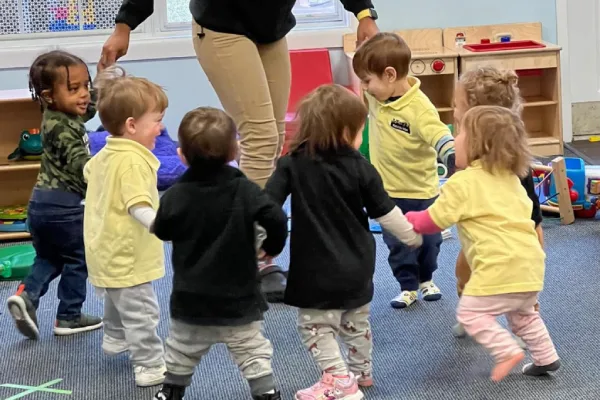
Baby socks in daycare are more than comfort items — they ensure safety, hygiene, and trust in childcare environments. For institutions and suppliers, this is a growing opportunity to provide daycare-ready socks that meet daily and seasonal needs.
🚀 Max Hosiery delivers premium infant socks with safety, sustainability, and custom options built in. Don’t wait — contact us today for samples, bulk orders, or custom daycare sock solutions designed for your market.
